From the January 2021 issue of Apollo. Preview and subscribe here.
It is hard not to warm to the personality of Thomas Herbert, 8th Earl of Pembroke (1656–1733), the most celebrated and eccentric collector of antiquities in early 18th-century Britain. In Lord Wharncliffe’s description a century later, the earl ‘distinguished himself chiefly by odd whims and peculiarities; one of which was a fixed resolution not to believe that any thing he disliked, ever did or could happen’. At the same time, he was a serious figure at a time of extraordinary transition in the scholarship of classical antiquities, when erudite antiquarians were seeking to make sense of classical art on the basis of a sometimes formidable knowledge of ancient literature and coinage, but with little access to comparative material and no established methodology. The signal achievement of Pembroke’s intellectual life was the formation of a huge collection of ancient and modern sculptures at the family seat of Wilton House in Wiltshire – the subject of my recently published catalogue and history, produced around 300 years after the formation of the collection.
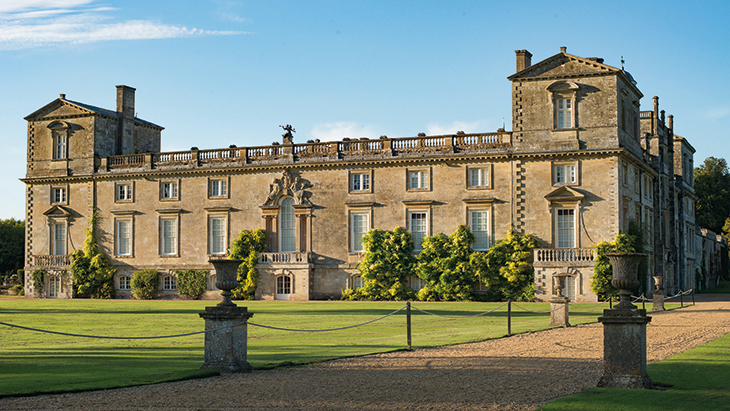
Wilton House, Wiltshire, from the south. Photo: Guido Petruccioli; © Wilton House Trust
The Earl of Pembroke turned to large-scale collecting relatively late in life, after a political career which straddled the 1688 revolution and saw him serving as Lord High Admiral and Lord Lieutenant of Ireland. He already had a reputation for the scale and quality of his coin collection, but after his retirement from public life, perhaps not long before 1720, he started to accumulate sculptures for Wilton House. There appear to have been regular new arrivals at Wilton over the next 10 years. Later sources, drawing on the earl’s own account, give the impression of a lucid collecting strategy based on rational criteria: only curiosities illustrative of history and literature; no duplicates, except for classical gods shown with differing iconographies or funerary altars and urns providing specific historical information; nothing except token examples from Egypt, Etruria, or south Italy; and as far as possible only works of the ‘best Ages’ (chiefly Greece in the fifth and fourth centuries BC, presumably).
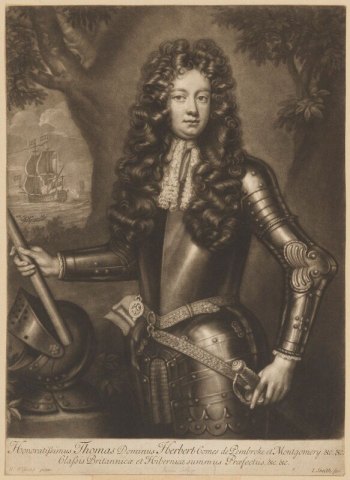
Thomas Herbert, 8th Earl of Pembroke (1708), engraving by John Smith after a painting by Willem Wissing. © National Portrait Gallery, London
In reality many of the earl’s acquisitions were indiscriminate and consisted principally of bulk purchases. The most important of these was the sorry remnant of the sculpture collection formed in the mid 17th century by another famously acquisitive connoisseur, the French chief minister Cardinal Jules Mazarin. It had fallen on hard times after his death in 1661. Mazarin bequeathed the collection to his niece, Hortense Mancini, and her husband, who took the title Duke of Mazarin. In 1670, unhinged by religious fervour, it seems, the duke one day set upon his immodest classical marbles with a hammer, enlisting the help of servants to smash the statues’ exposed breasts and genitalia. It created something of a stir in Paris and the king, Louis XIV, had a guard put on the sculptures pending an inquiry. The duke’s actions featured sensationally in Hortense’s subsequent legal battle with him.
That brought the heyday of the sumptuous Mazarin collection to an end and the sculptures languished in the Palais Mazarin, largely ignored for almost 50 years. When the palace was cleared for sale around 1718 (nowadays it houses the Bibliothèque nationale de France), the Earl of Pembroke purchased almost all the sculptures that remained, perhaps through the agency of a London-based dealer, Guillaume Hubert – more than 150 statues and busts in total. A reminder of the source of the sculptures is conspicuous at Wilton House today, where the busts stand on the beautiful, inlaid pedestals commissioned by the cardinal. The damage inflicted by his relative is also visible on some works, as on the upper legs and genitals of a Roman, archaising statuette of Hermes carrying a ram.
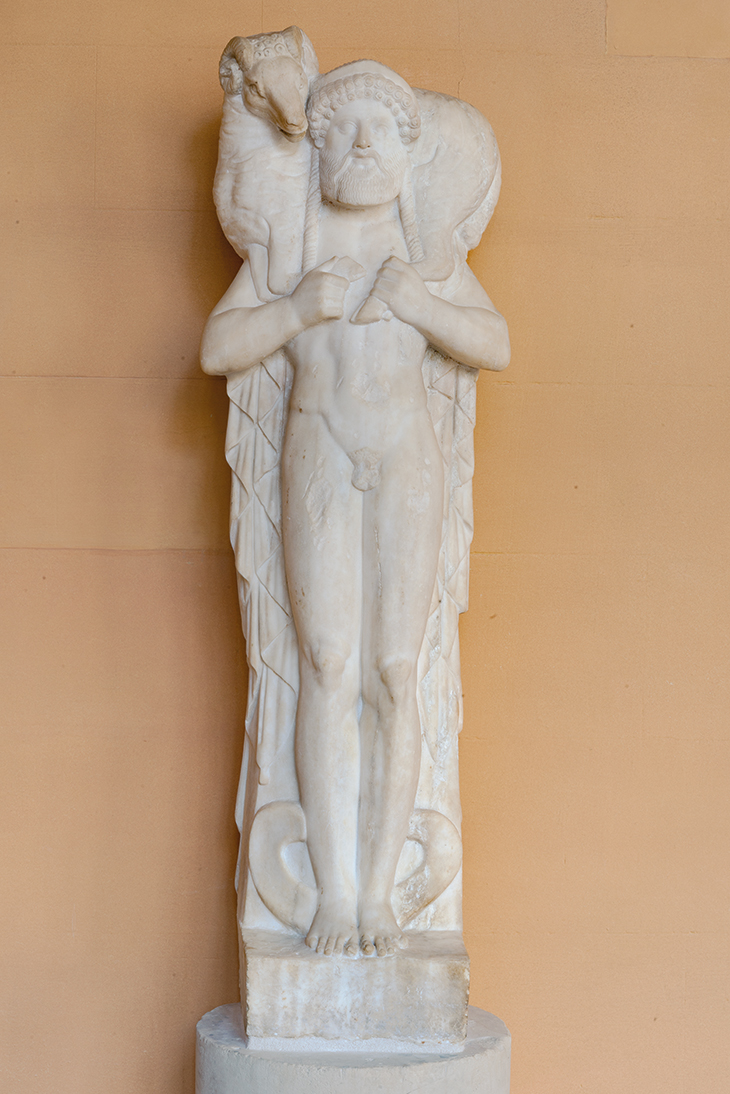
Hermes (c. late first century BC/early first century AD), Roman. Wilton House, Wiltshire. Photo: Guido Petruccioli; © Wilton House Trust
The sculptures comprised a mixture of genuine Roman antiquities and early 17th-century creations ‘after the antique’. But for Pembroke, his acquisitions from Paris and elsewhere could be regarded as ancient. He asserted that some of them were the oldest, best and most significant works to survive from antiquity, such as the two ‘Persian captives’ that adorn the east entrance to the house – which were apparently found in a sixth-century BC Persian viceroy’s palace in Egypt but are actually Renaissance herms. Insofar as he did have a collecting strategy, it was to represent aspects of the ancient world as comprehensively as possible, particularly through images of all the most famous Greeks and Romans. His list was informed by familiarity with classical literature and the gallery of profiles on his coins, but he did not set out to shop for them. The names were retrospectively imposed on the sculptures, quite literally, by the addition of inscribed labels in the marble or on pedestals. The inscriptions are sometimes so crude that one suspects the earl of executing them with his own hand. The identifications are often entirely arbitrary, and so rarely accurate that the correct names that do exist may merely be lucky accidents. In one remarkable example the Roman head of a young boy is inscribed in Greek with the name of Solon, the great statesman and lawmaker of Athens in the sixth century BC. This practice was quite typical of Pembroke’s wishful thinking, and both the significance and provenance of many of his sculptures were embellished by his own fantastic accounts recorded in manuscripts, which informed multiple editions of printed house guides through the 18th century.
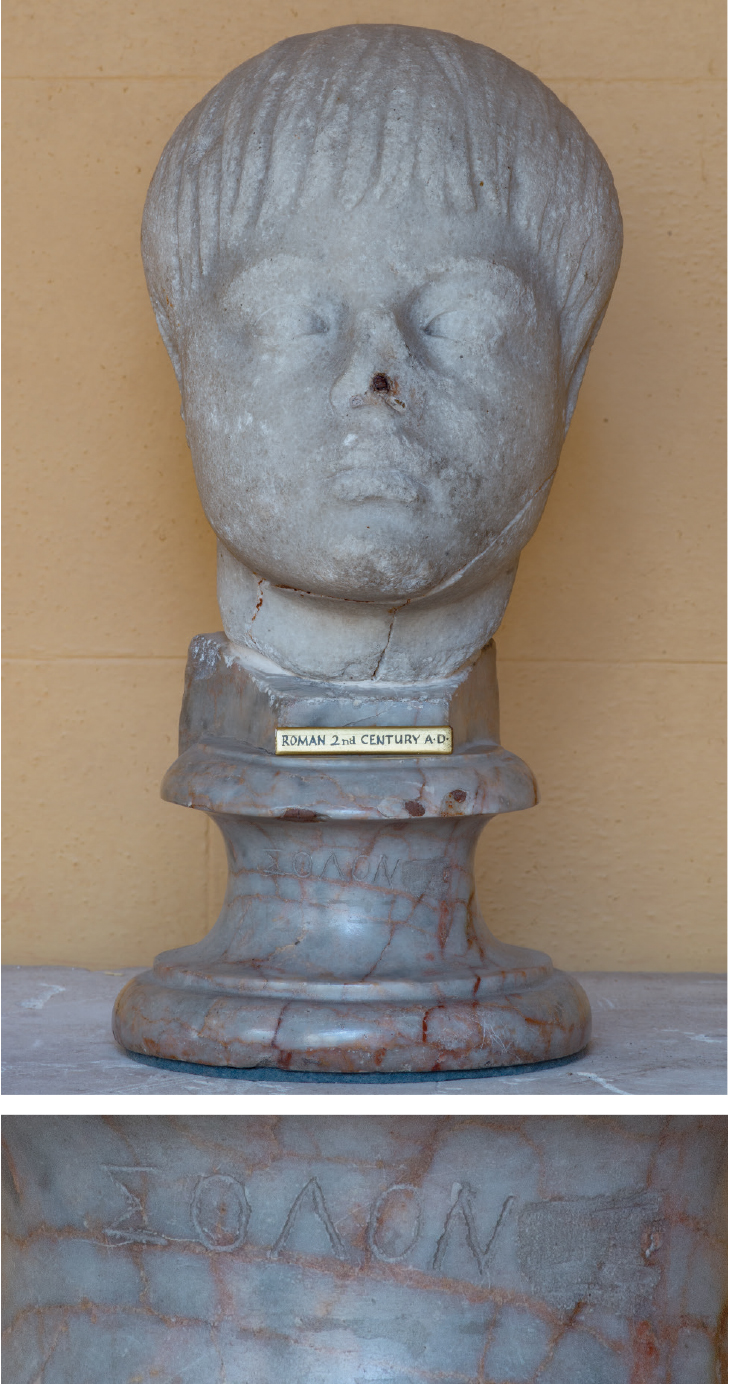
Above: Head of a boy (c. AD 100–120), Roman; below: detail of base inscribed with the name ‘Solon’. Wilton House, Wiltshire. Photos: Guido Petruccioli; © Wilton House Trust
While sometimes explicitly commenting on the earl’s eccentricities, Pembroke’s contemporaries usually seem to have bought into his view of the collection. His friend the Rev. William Stukeley was irritated that he had to abandon his catalogue of the Wilton sculptures in 1723 – the earl kept scribbling his own comments on the manuscript – but he was completely convinced of the collection’s significance and most of the identifications; as he writes in his Itinerarium Curiosum (1724), ‘You, my lord, by treading in the steps of the great Arundel, have brought old arts, Greece and Rome, nay Apollo and all his muses, to Great Brittan: Wilton is become tramontane Italy.’ Stukeley himself was an avid antiquary and was at the same time forming his views about the nearby Stonehenge, which he regarded as a Celtic monument.
So such amateur speculation needs to be viewed in the context of its time. But this was also a period of nascent professionalism in scientific enquiry. The gradual institutionalisation of research produced odd paradoxes. The 8th Earl of Pembroke served as president of the Royal Society, among others in between Christopher Wren and Isaac Newton. The Society of Antiquaries, which survives today as one of the most eminent archaeological institutions, was born around the same time as Stukeley’s quirky ‘Society of Roman Knights’, a club of antiquaries who took on classical pseudonyms (Pembroke was ‘Carvilius’). For all his nutty fantasies about the identity and origins of his sculptures (and much else besides), the earl was a close friend of sophisticated intellectuals such as Jonathan Swift and John Locke (An Essay Concerning Human Understanding is dedicated to him). The contrast between the intellectual products of early 18th-century Britain that have and have not stood the test of time is striking.
Attitudes to antiquities were shifting and collectors such as Pembroke would soon become the subject of scepticism and satire. Even in the earl’s lifetime there were critical comments. Isaac Newton reportedly commented: ‘Let him have but a stone doll and he’s satisfied. I can’t imagine those gentlemen but as enemies to classical studies; all their pursuits are below nature.’ He referred to Pembroke’s sculptures as his ‘old fashioned Babies’. Another contemporary remarked, ‘His Lordship’s caprice in ranging them [the statues and busts] and the liberty he has taken in cutting such names upon them as his own fancy suggested can only be excused by his having the property of them.’
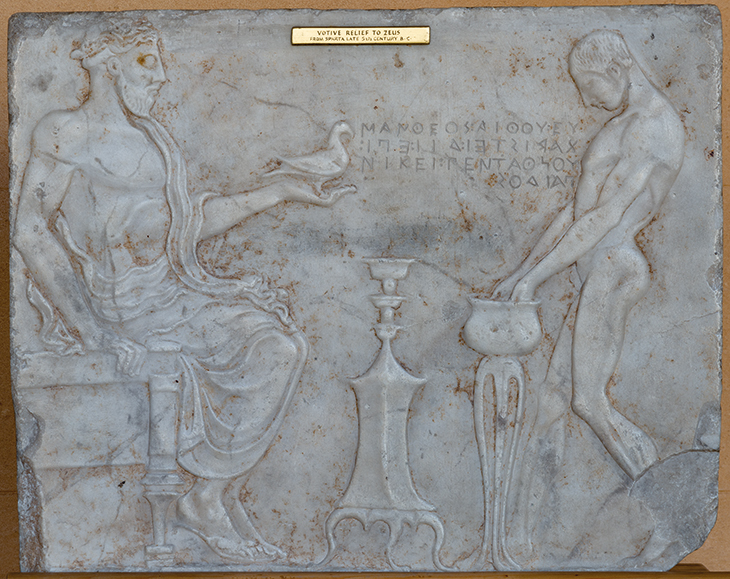
Relief of Mantheos son of Aithos, who ‘gives thanks to Zeus for his victory in the boy’s pentathlon’ (c. first century BC/first century AD), Roman imitation of archaic Greek sculpture, with Greek inscription added in the early 18th century. Wilton House, Wiltshire. Photo: Guido Petruccioli; © Wilton House Trust
Eyebrows were also raised at one of the most interesting sculptures in the collection, the relief of Mantheos. This unusual piece appears to have been carved around the start of the Roman empire, though its deliberately archaising style is meant to evoke a votive relief from archaic Greece. A dedicatory inscription in archaic Greek script was a very rare example of boustrophedon (with text running alternately from left to right and right to left). Contemporaries quickly suspected, and modern research has proven, that the inscription is fake and was added to the ancient stone some time in the early 1700s. There was even a hint that Pembroke himself may have been responsible, though a more mundane explanation is that he had declared ‘he would be at any Expence’ to get hold of a boustrophedon. It seems that a learned forger obliged. In any case, the story that Pembroke told about the relief’s origins – that the botanist William Sherard had acquired it for him in Asia Minor – was fiction, whether or not he had come to believe it himself.
The figure of the collector as a dupe, distracted from the obvious by erudite wishful thinking, took root at this time. There is a hint of it in Alexander Pope’s Epistle IV, to the Earl of Burlington, rewritten to mention Pembroke after his death, which specifically targets Wilton in its attack on the tasteless connoisseur (text of 1744):
He buys for Topham, Drawings and Designs,
For Pembroke Statues, dirty Gods and Coins;
Rare bookish manuscripts for Hearne alone,
And Books for Mead, and Butterflies for Sloane.
In the later 18th century, however, the figure of gullible collector acquired a new currency as a popular cliché. It was encouraged perhaps by a wider familiarity with archaeology, especially news of the spectacular and jealously guarded Bourbon discoveries at Pompeii and related sites. At the same time, antiquities collecting had been expanding socially and was no longer the preserve of the aristocracy.
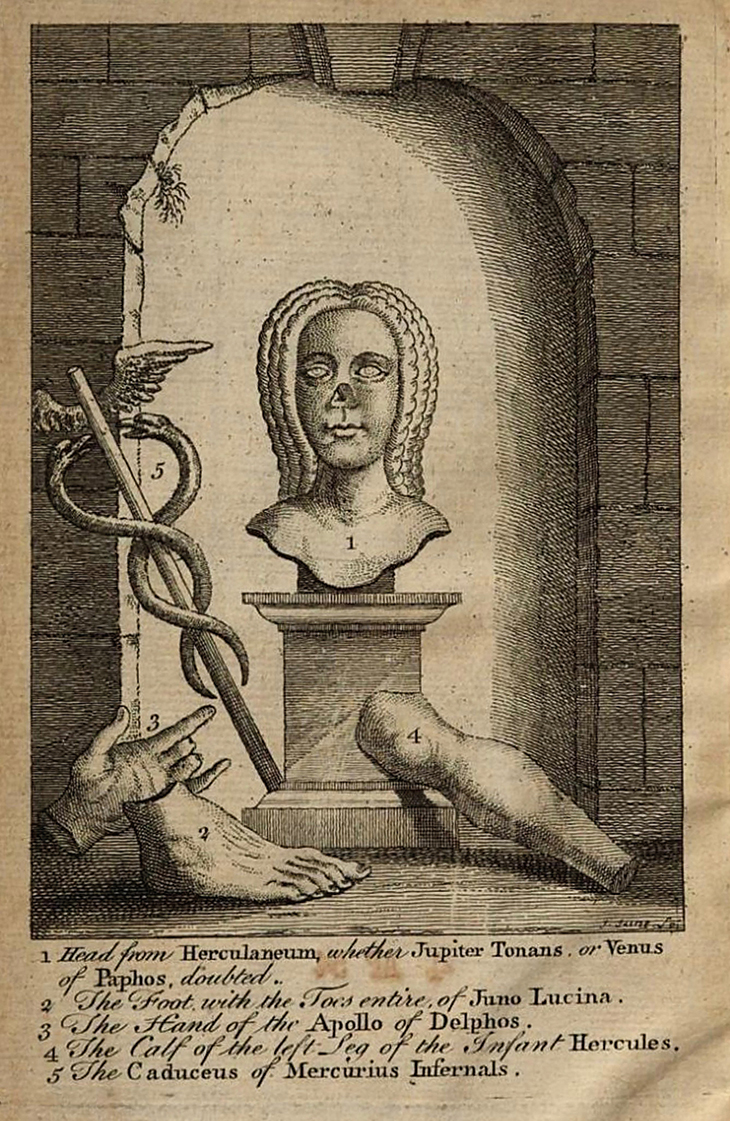
Frontispiece of the 1765 edition of Samuel Foote’s Taste: A Comedy, of Two Acts (1752). Photo: courtesy the British Library
In 1752, Samuel Foote’s comic play Taste, with a prologue by David Garrick, poked fun at collectors such as Lord Dupe and Sir Positive Bubble, who are exploited by a group of sly auctioneer-forgers. ‘I ne’er for Trinkets rack my Pericranium’, declares an auctioneer. ‘They furnish out my Room from Herculaneum.’ The frontispiece of early editions exhibits optimistically labelled fragments of ancient sculpture, including an early third-century Roman head which might as well be the colossal Julia Domna at Wilton. The preposterously contradictory identification reads, ‘Head from Herculaneum: whether Jupiter Tonans, or Venus of Paphos, doubted.’
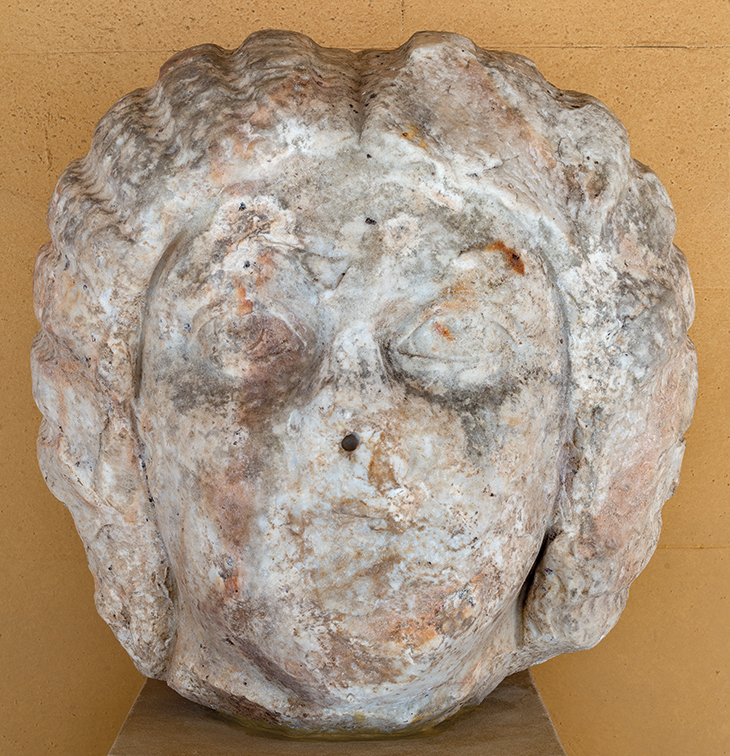
Head of the Empress Julia Domna (193–211 AD), Roman. Wilton House, Wiltshire. Photo: Guido Petruccioli; © Wilton House Trust
Foote’s play was not a great success when first performed, only later acquiring a wide audience through successive printed editions. The fact was attributed to the possibility that the general public did not yet fully get the joke. By the end of the century they certainly did, and the Wilton collection had come in for repeated scorn. In 1759 Horace Walpole commented, ‘I have lately been at Wilton, and was astonished by the heaps of rubbish. The house is grand, and the place glorious; but I should shovel three parts of the marbles and pictures into the river.’ Indeed an anonymous letter to The Oxford Magazine in 1772 accused the 8th Earl of discarding works himself: ‘The late Earl of Pembroke was extravagantly fond of, and thought himself a great connoisseur in, antiques, but after his death there were found, at the bottom of one of his ponds, a great number of statues which he purchased as antiques, and which he afterwards found were fabricated by moderns, buried in the earth, and afterwards dug up as if by accident.’ (It is probably only coincidence that the head of Julia Domna was rediscovered in the River Nadder in the 1980s.) Meanwhile the collector Charles Townley and the great J.J. Winckelmann himself were contemptuous of the extravagant claims made in James Kennedy’s official Wilton House guide.
While they were provoked by the exaggerated reputation of the collection, such judgements did not do justice to the sculptures’ significance. The collection included, for example, precious examples of Roman sarcophagus carving, unusual reliefs, marble portraits that still afford a glimpse into Roman imperial tastes and preoccupations, and masterpieces of early modern sculpture in the ancient style. But it became increasingly difficult to perceive their value beneath the accretion of restorations and tall tales. By the end of the century, the decline of the Wilton House sculptures was assured. Despite their reinstallation in specially designed gothic cloisters at the start of the 19th century, the collection never regained its former renown. Visitors increasingly remarked on the prevalence of early modern works among the antiquities and on their heavy restoration. As with many stately homes, Wilton’s financial burdens were alleviated with sales of the heirlooms, including the famous Wilton Diptych (to the National Gallery) in 1929, and nearly half the sculpture collection in the 1960s. But attitudes to historical collections have changed again. The new millennium has seen a programme of sensitive restorations at Wilton and the remaining sculptures, with their eclectic combination of ancient and modern, have received the first ever comprehensive academic catalogue. They offer a fascinating insight into not only Roman and early modern art, but also Britain’s intellectual history.
A Catalogue of the Sculpture Collection at Wilton House by Peter Stewart is published by Archaeopress.
From the January 2021 issue of Apollo. Preview and subscribe here.
Unlimited access from just $16 every 3 months
Subscribe to get unlimited and exclusive access to the top art stories, interviews and exhibition reviews.


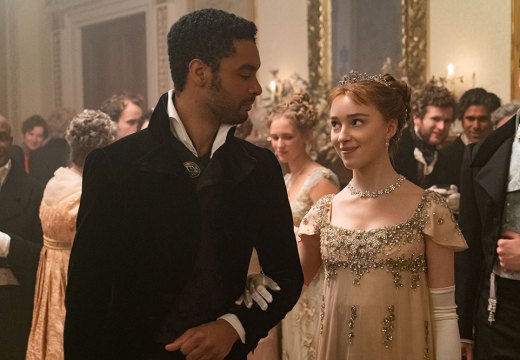
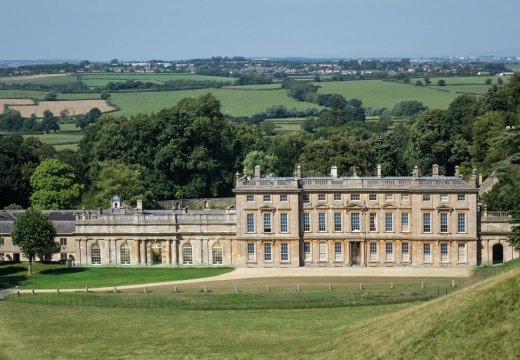
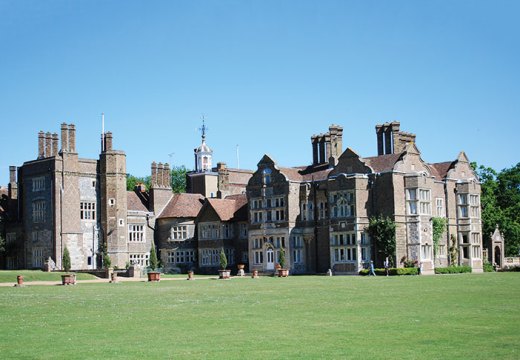









![Masterpiece [Re]discovery 2022. Photo: Ben Fisher Photography, courtesy of Masterpiece London](http://www.apollo-magazine.com/wp-content/uploads/2022/07/MPL2022_4263.jpg)
It’s time for the government of London to return to its rightful home